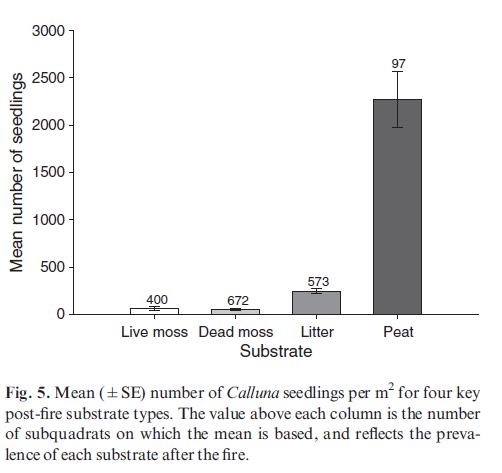

Grant CJ et al (2016) Fracked ecology: Response of aquatic trophic structure and mercury. In temporary ponds, in contrast, Odonata species rely on prey from a single season, engage in a prolonged aquatic phase and hatch later, leaving less time to acquire terrestrial prey resources for offspring production. The public health impacts of hydraulic fracturing, or fracking. Terrestrial prey forms the basis for egg production and thus the next generation of aquatic larvae. Fracked ecology: response of aquatic trophic structure and mercury biomagnification. The results suggest that because of their long larval development, Odonata species of permanent ponds carry the larval signature, which is partly replaced during their terrestrial life. el editor de este documento bibliogrfico es M Lubin Finkel. Aspectos del impacto del fracturamiento hidrulico de pozos terminados en zonas con hidrocarburos en el ambiente y en el ser humano.

#GRANT CJ FRACKED ECOLOGY PDF#
Replacement of larval carbon varied between tissues, with wings representing the larval isotopic signature whereas thoracic muscles and eggs reflected the δ 15N and δ 13C values of the terrestrial diet of adults.Ĥ. The Human and Environmental Impact of Fracking - Free ebook download as PDF File (.pdf), Text File (.txt) or read book online for free.

The replacement was more pronounced in Odonata species of permanent ponds than in those of the temporary pond, where larvae hatched later in the year. Changes in δ 15N and δ 13C values between larvae and adults were species specific and reflected differential replacement of the larval isotopic signature by the terrestrial diet of adult Odonata. In contrast, in a temporary pond, δ 13C values of Odonata larvae were similar to those of putative prey, indicating that their body carbon originated mainly from prey species present.ģ. Presumably, prey consumed during autumn and winter when carbon is internally recycled and/or methanotrophic bacteria form an important basal resource of the food web. In permanent ponds, δ 13C values of Odonata larvae were distinctly lower than those of putative prey, suggesting that body tissue comprised largely of carbon originating from isotopically light carbon sources. We investigated stable isotope variations in Odonata species, putative prey and basal resources of aquatic and terrestrial systems of northern Mongolia during summer.Ģ. It is increasingly realised that aquatic and terrestrial systems are closely linked. These findings suggest that past HF activity in streams can affect the microbial community response to environmental perturbation such as that caused by the biocide DBNPA.1. Similar taxa were able to tolerate glutaraldehyde and DBNPA however, DBNPA was not as effective for microbial control, as indicated by a smaller overall decrease of 16S rRNA gene copies/ml after exposure to the biocide, and a more diverse set of taxa was able to tolerate it. Many of the brominated by-products detected that are believed to be uncharacterized may pose environmental and health impacts. A total of 17 DBNPA by-products were detected, many of them not widely known as DBNPA by-products. HF-impacted microbial communities were more sensitive to DBNPA, causing the biocide and by-products of the degradation to persist for longer than in HF-unimpacted microcosms. The differences in microbial community changes affected degradation dynamics. The microbial community responded to DBNPA differently in HF-impacted versus HF-unimpacted microcosms in terms of the number of 16S rRNA gene copies quantified, alpha and beta diversity, and differential abundance analyses of microbial community composition through time. A commonly used biocide in HF, 2,2-dibromo-3-nitrilopropionamide (DBNPA), was studied in microcosms of HF-impacted (HF+) versus HF-unimpacted (HF−) surface water streams to (i) compare the microbial community response, (ii) investigate DBNPA degradation products based on past HF exposure, and (iii) compare the microbial community response differences and similarities between the HF biocides DBNPA and glutaraldehyde. Production of unconventional oil and gas continues to rise, but the effects of high-density hydraulic fracturing (HF) activity near aquatic ecosystems are not fully understood. Login ID: Password: Re-enter: Email: (Dont worry, your e-mail will not be distributed or made public.


 0 kommentar(er)
0 kommentar(er)
